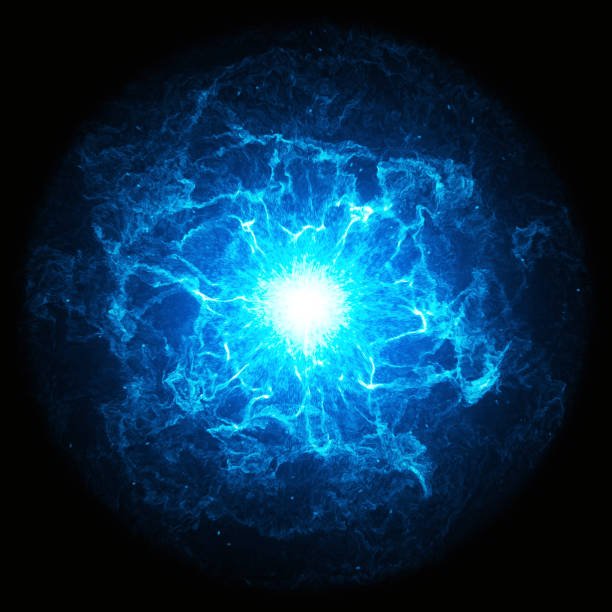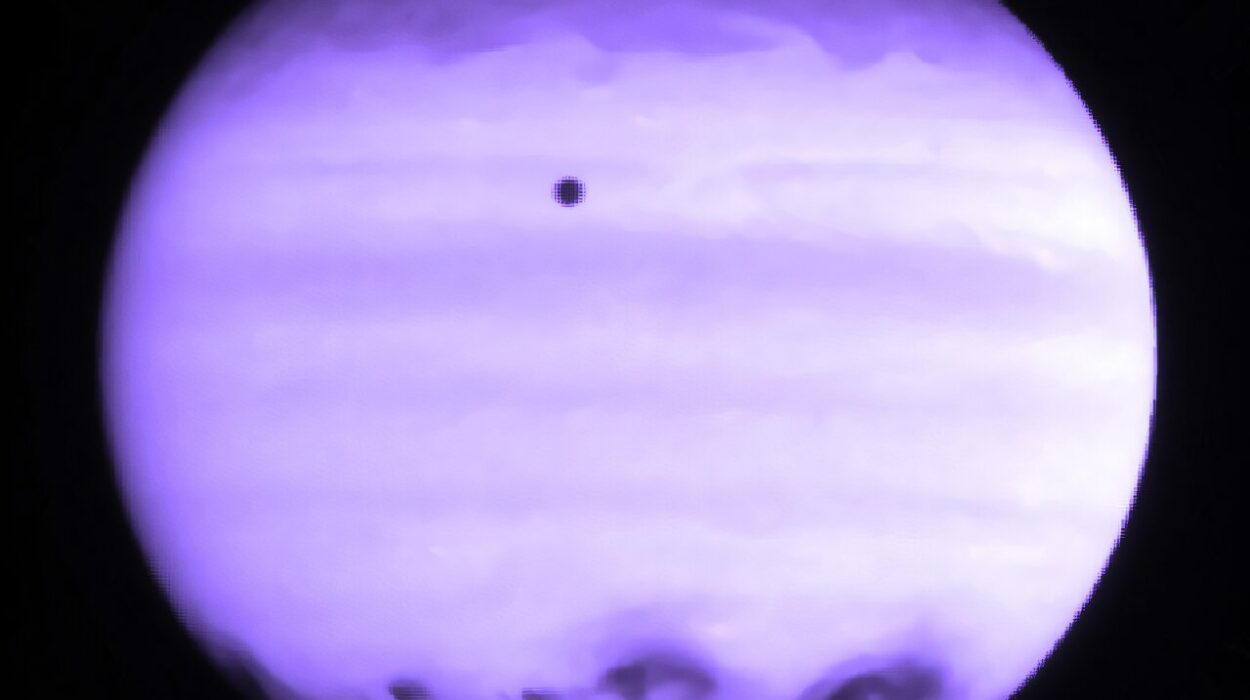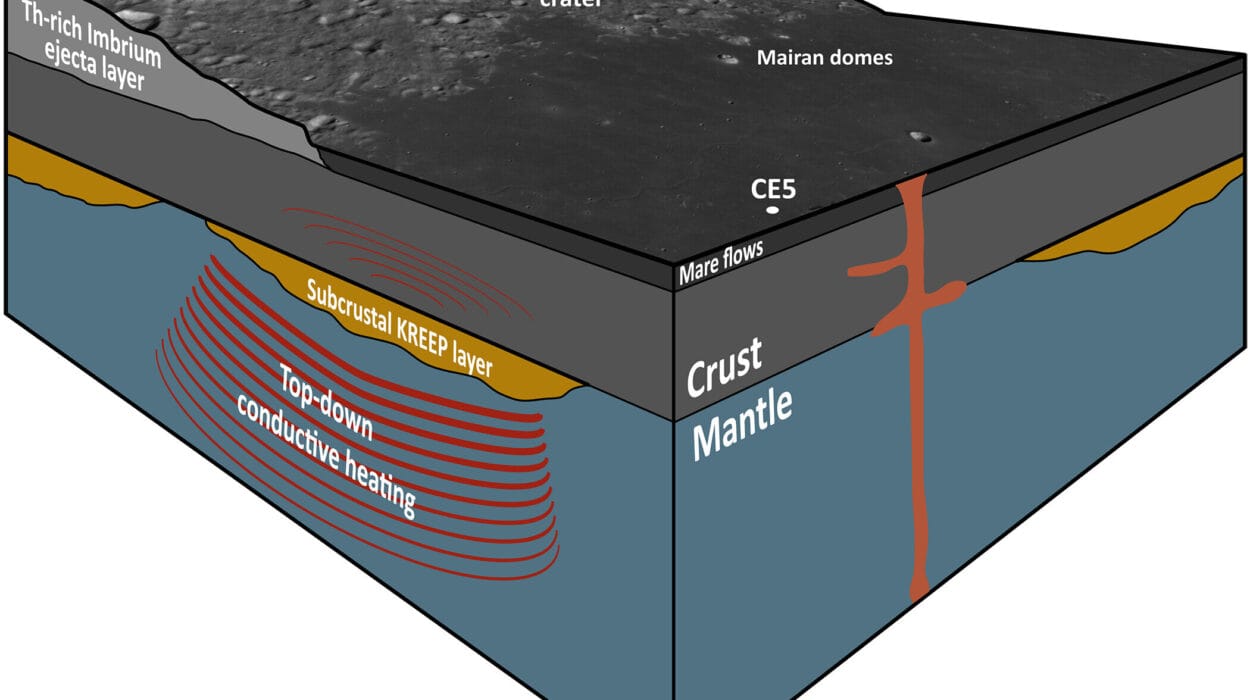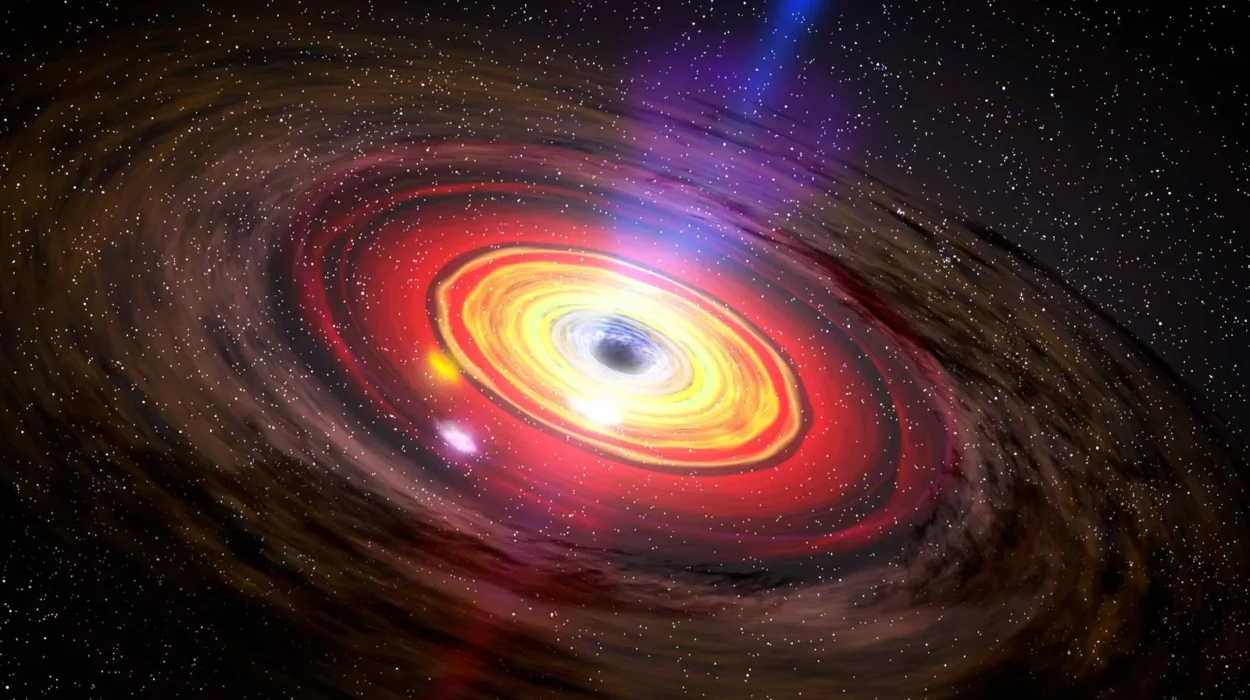In the sweeping darkness of the universe, where galaxies swirl and stars are born in brilliant explosions, a quiet anomaly has emerged—one that might rattle the very scaffolding of modern astrophysics. Astronomers using the W. M. Keck Observatory on Maunakea, Hawaiʻi, have found a faint, ghostly galaxy—FCC 224—hiding on the outskirts of the Fornax Cluster, roughly 60 to 65 million light-years from Earth. But what makes this galaxy exceptional isn’t just its dim presence—it’s what it doesn’t have: dark matter.
This unassuming ultra-diffuse dwarf galaxy could force scientists to rethink some of the most fundamental principles of the cosmos. For decades, dark matter—the mysterious, invisible substance that makes up about 85% of the universe’s matter—has been considered essential to galaxy formation. Without it, according to our prevailing cosmological models, galaxies shouldn’t exist. Yet here lies FCC 224, a cosmic ghost that seems to defy the rules.
Cracking the Galactic Code: A Discovery in Two Acts
The discovery of FCC 224 was no accident; it was the result of two meticulous, complementary studies that cast light on this enigmatic structure from different angles.
The first was led by Yimeng Tang, a doctoral candidate at the University of California, Santa Cruz, and focused on the galaxy’s system of globular star clusters—tight, spherical groups of ancient stars orbiting the galactic core. The second, led by Maria Luísa Buzzo, a doctoral candidate at Swinburne University and the European Southern Observatory, used Keck Observatory’s Keck Cosmic Web Imager (KCWI) to probe the galaxy’s inner structure and dynamics.
What both teams found was extraordinary: FCC 224 possesses an unusual number of bright globular clusters, yet its stars move with such little internal motion—what astronomers call velocity dispersion—that it seems to lack any significant dark matter, at least within its central regions. That’s like seeing a spinning carousel that appears to be held together by sheer gravity alone, without the hidden scaffolding that makes it possible.
Why This Discovery Matters
The idea that a galaxy could exist without dark matter is more than just scientifically curious—it’s paradigm-breaking. Dark matter has long been considered the invisible glue that holds galaxies together. It doesn’t emit or absorb light, making it undetectable through traditional telescopes. Instead, its presence is inferred from its gravitational effects—like the high rotational speeds of stars in galaxies and the bending of light from distant objects.
Until recently, the only galaxies suspected to be missing dark matter were DF2 and DF4, located in the NGC 1052 group—a unique environment thought to be conducive to rare interactions. FCC 224, however, is nowhere near this group. It exists in a completely different region of space, in the Fornax Cluster, suggesting that dark matter-deficient galaxies might be more common than previously believed.
That opens the door to profound questions: Are there hidden populations of such galaxies lurking throughout the cosmos? And if so, what does that say about the universality of dark matter in galaxy formation?
The Globular Cluster Mystery
One of the major clues in this galactic whodunit is FCC 224’s globular cluster system. Tang’s team, using imaging data from NASA’s Hubble Space Telescope (HST), noticed that the galaxy had a surprisingly rich and luminous collection of these star clusters, especially for a galaxy of its size and brightness. Typically, the number and brightness of globular clusters are correlated with the amount of dark matter in a galaxy—they tend to form in deep gravitational wells created by dense dark matter halos.
Yet FCC 224 flips that expectation on its head: it has an abundance of globular clusters, but very little dark matter holding them together. This discrepancy throws conventional theories into disarray. Could these clusters be the remnants of a more massive galaxy that lost its dark matter in a dramatic cosmic collision? Or is there a more subtle process at work, one that astronomers are just beginning to imagine?
Peering into the Heart of Darkness with KCWI
To answer those questions, Buzzo’s team turned to high-resolution spectroscopy—a technique that splits light into its component wavelengths to reveal the motion of stars and gas. Using KCWI’s red arm, which was recently enhanced for deeper, more precise observations, the team measured the velocity dispersion of FCC 224’s stars and globular clusters.
The results were startling. The stars were barely moving relative to each other—an indication that there isn’t enough gravitational pull from dark matter to stir them up. In short, FCC 224 appears to be dynamically cold, a term that in galactic lingo means it’s missing the invisible mass that should be generating gravitational motion.
“This precise velocity measurement was crucial,” explained Buzzo. “It confirmed that FCC 224 is not just an optical illusion or statistical fluke—it genuinely seems to lack dark matter in its inner regions.”
Tang agreed: “The star clusters gave us the first hint, but the spectroscopy solidified it. There’s no known galaxy formation model that can naturally produce a system like this without invoking some kind of extraordinary interaction.”
A Bullet-Dwarf? The Leading Hypothesis
If FCC 224 didn’t form the usual way, then how did it come to be? One leading idea gaining traction is known as the “bullet-dwarf” model. This theory posits that a high-velocity interaction—perhaps a collision or near-miss with another galaxy—stripped FCC 224 of its dark matter, leaving behind only its visible stars and clusters.
Such a collision would have to be incredibly violent, like a cosmic car crash at hundreds of kilometers per second. While the gas and stars might remain bound in a loose configuration, the dark matter—being more diffusely distributed and less tightly bound—could be flung away or absorbed by the larger galaxy.
This scenario is speculative, but not without precedent. Similar processes are thought to occur in larger galaxy clusters, such as in the famous Bullet Cluster, where dark matter and normal matter appear to have been separated by a massive intergalactic collision.
A Window Into Cosmic Evolution
If FCC 224 and galaxies like it are real and not just cosmic outliers, they could offer a rare and invaluable window into the evolution of galaxies. By stripping away the dark matter layer, astronomers can observe what a galaxy looks like “naked”—revealing the pure dynamics of stars and clusters.
Furthermore, such galaxies might serve as laboratories to study the nature of dark matter itself. Are we wrong about its role in galaxy formation? Or do these galaxies simply represent the tails of the distribution, formed under exotic and rare conditions?
“Each new discovery like FCC 224 forces us to confront the unknown,” said Buzzo. “It sharpens our theories, challenges our assumptions, and sometimes rewrites the textbooks.”
The Road Ahead: A New Era of Discovery
The discovery of FCC 224 is far from the end of the story—it’s just the beginning. Both Tang and Buzzo emphasize the urgent need for follow-up observations, not just of FCC 224, but of other potential dark matter-deficient galaxies scattered across the sky.
Advanced telescopes like the James Webb Space Telescope (JWST), the Vera C. Rubin Observatory, and next-generation instruments on Keck and the European Extremely Large Telescope (E-ELT) will allow astronomers to scan deeper and more broadly for faint, low-mass galaxies that defy expectations.
“We want to build a catalog,” said Tang. “The more examples we find, the better we can understand whether FCC 224 is an exception—or part of a larger, hidden population.”
For now, FCC 224 stands as a tantalizing riddle, a quiet whisper from the universe urging us to look closer, think harder, and question even our most trusted cosmic assumptions. One thing is certain: the cosmos still holds secrets, and it’s up to us to unravel them—one faint galaxy at a time.
References: Yimeng Tang et al, An Unexplained Origin for the Unusual Globular Cluster System in the Ultradiffuse Galaxy FCC 224, The Astrophysical Journal (2025). DOI: 10.3847/1538-4357/adae11
Maria Luisa Buzzo et al, A new class of dark matter-free dwarf galaxies?, Astronomy & Astrophysics (2025). DOI: 10.1051/0004-6361/202453522






